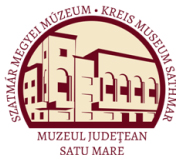Marta, Liviu: The Late Bronze Age Settlements of Petea-Csengersima (Satu Mare, 2009)
VI. Annexes
VI. ANNEXES The Description of Archaeological Complexes733 Katalin Almássy and Liviu Marta Sector A (Fig. 11). S “A” Complex 1 (Fig. 11,12). A pit with an oval outline (200 x 230 cm) was dug into the sterile soil, in 80 cm depth. Its walls were 57 cm high, with various inclinations. The base showed two convex shapes. The fill was brown-grey with black inclusions towards the top, and brown-yellowish additions at the base. Inventory: 122 pottery fragments originated from at least 14 vessels, 5 daub pieces. Five fragments have incised and excised decoration (PI. 3/6-7) that originated from at least 3 vessels. A sheep or goat mandible laid on the base of the pit. Date/culture: Suciu de Sus. Pottery shape Paste Decoration type Pottery typeNo. of elements Plate c EA 1 2/10 amphora s 2B 1 2/11 strainer s 2A 1 2/12 pot c lBb 1 2/15 c GA 1 pot c 2B 1 3/1 dish f 2Aa 3/2 cup f DA 3B 1 3/3 f M 3/6 pot c GA 1 3/7 cup f 1-dish s 2A 1 cup DA 3B 1 dish 2A 1 pot 2B 1 strainer 2A 1 _ Sector B (control trench) (Fig. 11). S “B” Complexl - Bronze hoard (Fig. 11, 12). The needles were placed vertically into the ground. Their upper parts were buried into the dark layer of soil, below the existing topsoil, and their bent tips and most of their bodies were placed into the sterile clay. There was a black spot with a diameter of 20 cm which was situated around the needles, in the confines between the cultural layer and the sterile layer. This suggested that for the burial of those needles a hole was dug. The existence of the pit was illustrated by the presence of the disc and of the protrusions that restrainted the needles to penetrate the ground with their upper part. The small, black spot of soil that appeared in the upper sterile layer was likely to be the very base of the pit that was excavated for the pieces to be laid in it. Sector S2 (10 x 1 m, 10 m2, Fig. 7). No significant complexes. Sector S3 (10 x 1 m, 10 m2, Fig. 7). 733 This chapter embraces the description of the shape of the complexes as well as a short description of the artifact’s categories found on them. The tables contain the ceramic elements (vessel’s shape and ornaments) identified on the archaeological complexes. 105
